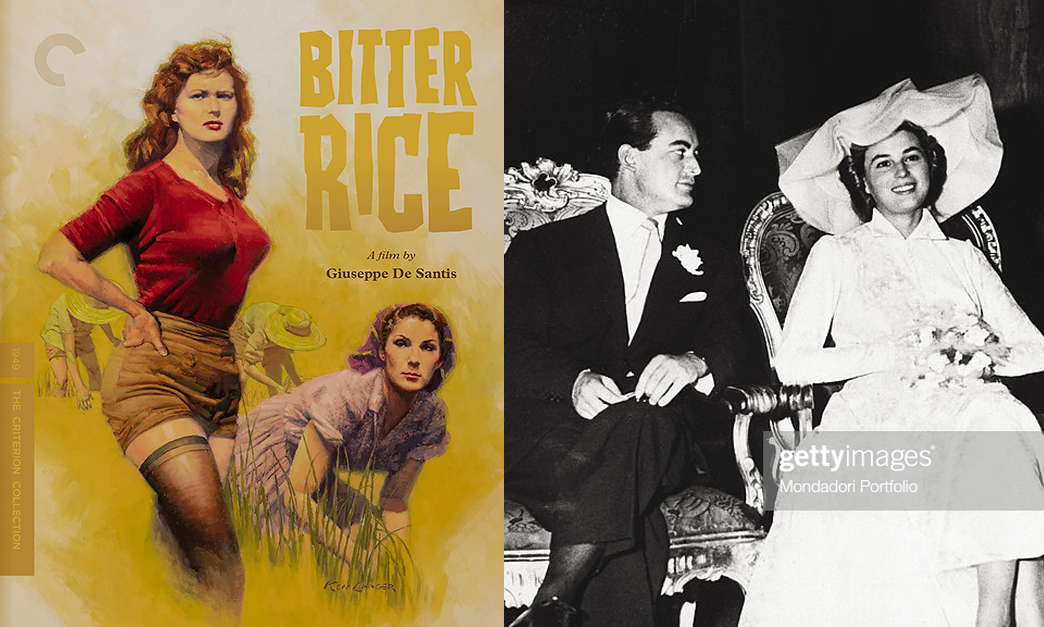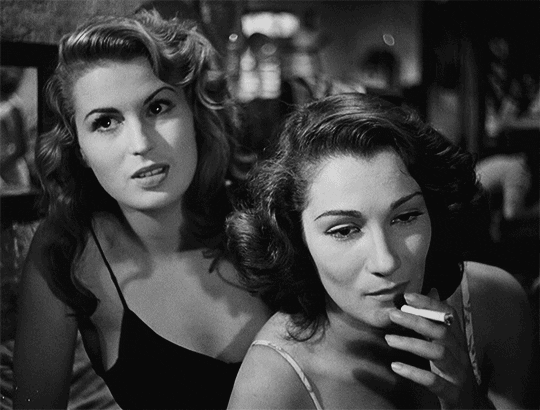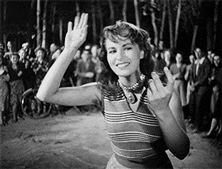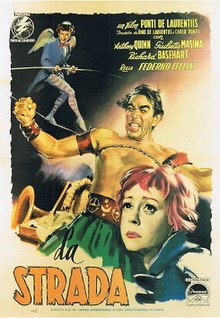De Laurentiis pt 1: "Bitter Rice" and the Fellini Years
 Monday, August 5, 2019 at 6:30PM
Monday, August 5, 2019 at 6:30PM
This week at TFE we're celebrating the centennial of one of cinema’s most prolific and legendary producers, Dino De Laurentiis. We’ll start with three of his key influential early films. Here's Eric Blume...
 Bitter Rice was De Laurentiis breakthrough international hit. He married its star
Bitter Rice was De Laurentiis breakthrough international hit. He married its star
De Laurentiis, born outside of Naples, set up his own company in 1946 when he was just 27 years old. He produced four smaller films before making a huge splash onto the international scene with 1949’s Bitter Rice, a film currently available through the Criterion Collection. Bitter Rice serves up an arresting and hypnotic blend of melodrama, sexuality, and social commentary. The film is set in northern Italy during a typical spring where hundreds of poor women travel to the rice fields to work to the bone for forty days. There are workers with a legal contract and then the “illegals” who come in hopes of getting an opportunity. Within this sociopolitical context, our story finds two thieves (Doris Dowling and Victoria Gassman) hiding amongst the farm, intertwined in love stories with an impulsive young peasant girl (Silvana Mangano) and a soldier from the nearby station (Raf Vallone)...
 Silvana Mangano in her first leading role and the American actress Doris Dowling first of three Italian pictures.
Silvana Mangano in her first leading role and the American actress Doris Dowling first of three Italian pictures.
The Criterion print is gorgeous. The four leads are astonishingly beautiful and exemplify the emphasis on faces that early Italian cinema is known for. Director Guiseppe De Santis puts a highly sexualized Mangano front and center for a star-making performance. De Laurentiis married the then 19 year-old leading lady just after Bitter Rice was completed. (Their marriage lasted almost forty years but they divorced shortly before Mangano's death). De Laurentiis and De Santis made sure this hot-and-bothered story was told not just with passion in the loins but also with a beautifully troubled heart and a fast-thinking head.
 Bitter Rice takes from the Neorealist films the trials of everyday people, the then-current economic and social turmoil, and the on-location shooting. The film looks to have maybe one actual set, whereas the rest of it is shot on a farm in northern Italy that truly becomes its own character. It’s an involving, smashing picture that showed the young producer's talent for finding absorbing dramas and interesting actors, and for telling uniquely Italian stories.
Bitter Rice takes from the Neorealist films the trials of everyday people, the then-current economic and social turmoil, and the on-location shooting. The film looks to have maybe one actual set, whereas the rest of it is shot on a farm in northern Italy that truly becomes its own character. It’s an involving, smashing picture that showed the young producer's talent for finding absorbing dramas and interesting actors, and for telling uniquely Italian stories.
After the breakthrough De Laurentiis produced a handful of other films before launching his partnership with another of cinema’s finest producers, Carlo Ponti. In turn they began a relationship with one of the world’s all-time greatest directors, Federico Fellini. The two films resulting from this trio, 1954’s La Strada and 1956’s Nights of Cabiria, are bonafide classics of international cinema. They also became the first two Oscar winners of the newly formed "Best Foreign Language Film" category (retitled earlier this year to Best International Feature Film).
So much has been written about both of these remarkable films that I won’t tackle them here, other than to briefly address them in the context of De Laurentiis.
While he and Fellini had a contentious relationship, it’s undeniable that De Laurentiis spotted Fellini’s extraordinary talent with I Vitelloni (1953), and when Fellini couldn’t get funding for La Strada, De Laurentiis and Ponti made this very uncommercial film possible. Whatever their arguments might have been, these producers allowed Fellini to deliver two films that are absolutely his, and they pushed both films to great international success and acclaim.
 De Laurentiis's early productions serve as something of bridge from the classic Italian Neorealist cinema and the introduction of Federico Fellini to the world. This trio of hits points to De Laurentiis’ awesome early instincts: not only did he pick talented directors and expressive actors, he knew that gripping stories and compelling characters were crucial, and he moved with the changing tide. The neorealist movement was coming to an end, and onscreen acting and storytelling was changing. De Laurentiis, early in his career, found a way to whet audience’s appetites for the future yet keep his filmmakers honest and true to themselves.
De Laurentiis's early productions serve as something of bridge from the classic Italian Neorealist cinema and the introduction of Federico Fellini to the world. This trio of hits points to De Laurentiis’ awesome early instincts: not only did he pick talented directors and expressive actors, he knew that gripping stories and compelling characters were crucial, and he moved with the changing tide. The neorealist movement was coming to an end, and onscreen acting and storytelling was changing. De Laurentiis, early in his career, found a way to whet audience’s appetites for the future yet keep his filmmakers honest and true to themselves.
Tomorrow in Part 2: Tim Brayton looks at the 1960s. De Laurentiis’ builds his own studio Dinocittà and goes epic.



Reader Comments (4)
After Meryl Streep's story about him, had an icky feeling about De Laurentiis.
An entire post devoted to memorable Italian movies and the first comment is about Meryl Streep.
Strongly recommend Bitter Rice.
Nights of Cabiria is phenomenal. Not only is it Fellini's masterpiece but I would dare say it's one of the dozen (or maybe half-dozen!) greatest films of all time! It's firmly on my all-time Top 10 list.
After this post I MUST see Bitter Rice.